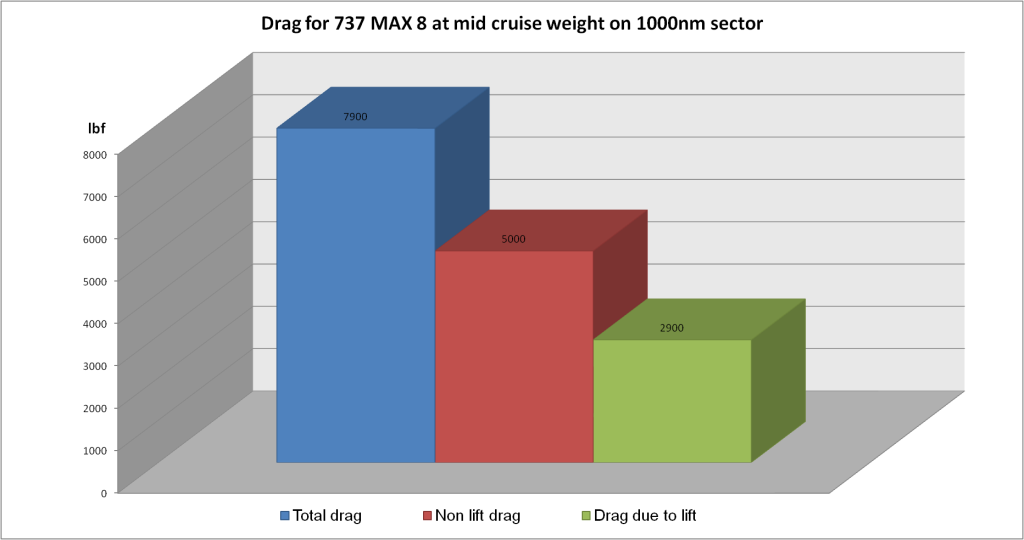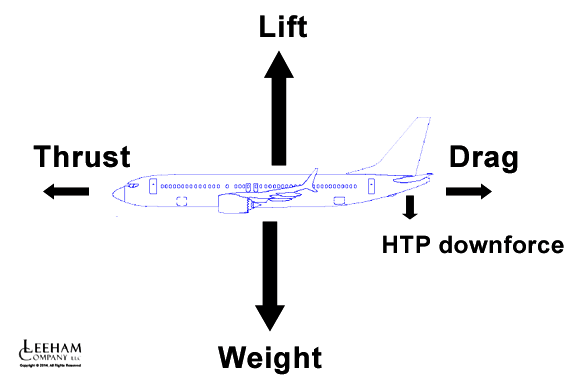Leeham News and Analysis
There's more to real news than a news release.
Airbus wins Delta wide-body order
Airbus has won the hotly-contested competition for 50 wide-body airplanes, two sources tell Leeham News and Comment.

Artist rendering of Delta Air Lines A350, via Twitter, original source unknown.
Airbus will sell Delta 25 A350-900s and 25 A330-900s, our sources say. Rolls-Royce is the sole-source engine supplier.
 Boeing hoped to sell Delta the 787-9 and also offered five new 777-200LRs as bridge lift until delivery slots for the 789 were available, according to our information.
Boeing hoped to sell Delta the 787-9 and also offered five new 777-200LRs as bridge lift until delivery slots for the 789 were available, according to our information.
Delta looks to double Seattle gates as wide-body decision nears
Delta Air Lines wants to double the number of its gates at Seattle, potentially allowing more than 300 flights a day, Bloomberg News reports. The story appeared just weeks before Delta will make its decision whether to order 50 wide-body jets from Airbus or Boeing, with about half of them planned for trans-Pacific service from Seattle and Delta’s Detroit hub; and the other half for trans-Atlantic service from New York and Atlanta.
Best-and-final-offers from Airbus and Boeing were due last week or this week and an internal decision is due after Thanksgiving, we are told. Delta is expected to announce its decision at its annual investors day, which is December 11 this year.
Airbus has its annual investors days December 10-11 in London. We don’t ascribe any significance to the concurrent dates, since these are dates of long-standing in years past.
Boeing fails to assure on 777 production gap
Subscription required
Introduction
Boeing’s ability—or inability—to bridge the production gap for the 777 Classic to the 777X entry-into-service in 2020 was a top concern of a series of Wall Street types during a recent series of meetings we had across the USA.
.
There is a great deal of skepticism over whether Boeing can successfully maintain the current production rate of 100/yr (8.3/mo). People we talked with look at the number of orders Boeing needs to bridge the gap, the Boeing claims that it can obtain 40-50 or 40-60 a year, and, in a more recent development, the falling oil prices depressing the need for a new, more efficient 777-300ER compared with the 2004 model and the even older 777-200ER series.
.
We have been telling our clients since March that Boeing will have to reduce the production rate of the 777 because of the large production gap. Aerospace analysts began waking up to this possibility by May and the broad consensus today is that Boeing will have to reduce the rate—the only questions remaining is by how much and how soon.
.
As recently as the 3Q2014 earnings call, Boeing continues to assert it will be able to maintain rates with new sales. Boeing has booked 43 firm orders through October for the 777 Classic—39 for the 300ER and four for the freighter. This is as the low-end of the range Boeing says it needs.
.
However, our Market Intelligences gathered over the summer and into the fall indicates sales efforts are struggling.
.
Summary
- Boeing clearly hasn’t been persuasive in its claims it will bridge the production gap at current rates;
- Boeing has open delivery slots in the second half of 2016;
- The big drop off in backlog begins in 2017 and gets worse going forward;
- Key airlines that have been pitched have said “no;”
- Emirates sends the industry’s first operational 777-300ER to scrap;
- Bow wave of 777s coming to 12 years and off lease begins soon, creating cheap alternatives to new sales; and
- Lessors will be compelled to offer -300ERs for low prices, depressing opportunities for Boeing.
Airbus group reports Q3 and first nine month 2014 results
Airbus today reported Q3 and first nine months results for 2014. It could be summarized with one sentence, “steady so”.
It is an Airbus group more in control of their destiny and programs then it has ever been, also when it was called EADS. There are still challenges in several programs but these are addressed from a position of strength and against a backdrop of these programs having passed their most risky periods.
First the financial results: revenue for the first 9 months were up 4% to € 40.5 bn, EBIT up with 12% to € 2.5 bn, both compared to first 9 months 2013. Free cash consumption is down to € 2.1 bn from € 4.7 bn last year and shall be break even on a full year basis.
Looking at the Airbus group divisions and their major programs the following can be noted:
Civil airliners
Has already passed the order target for the year with 791 net orders until 1 October, the strong market for airliners continue. Airbus has also reached both European and US certification for A350-900 and delivery of first aircraft is planned for December to Qatar Airways. Airbus points out that the program is still challenging and can cause provisions, we judge the program to be past its most challenging phase however.
Airbus says they are not worried to firm up the 127 A330neo order commitments they have got, these commitments are not counted in the order tally of 791. We hear good things about the program with airlines. The one program which is still challenging when it comes to sales and execution is the A380, no new orders so far, just the cancellation of the Skymark deliveries. Airbus maintains that A380 will stop costing money to produce and deliver come end of 2015.
Helicopters
The market is weaker then expected, bookings was down to 208 from 276 units a year ago. Backlog has shrinked to 908 helicopters, about 3 years of production. EBIT margin is still acceptable at 5.7% on virtually flat deliveries and revenue.
Defense & Space
Defense is the problem child of the group, the large programs either don’t sell (Typhoon) or are hard to deliver to demanding customers (A400M). Airbus flagged that customers which has taken delivery of A400M are not fully pleased and that a program review will be made in time for full year results that can include further provisions for the program.
The highlight of the division is space which is developing well both for launchers and satellites and this will continue as Airbus sees it. In total revenue was down 2.2% to € 8.2 bn, cost control kept EBIT above 4% at € 370 m.
Summary
All in all no spectacular results but also no surprises. When comparing Airbus results with Boeing’s Q3 results one shall observe that Airbus takes the present development and ramp-up intensive period (A350, A320neo, A330neo and still A380) directly to the bottom line where Boeing uses program accounting and spreads development and ramp up costs for 787 (still costing the company to produce), 737 MAX and 777X over a longer period, the so call accounting block. One shall therefore compare these two on the civil airliner side over a long period of time to understand the real performance difference between them.
Zhuhai airshow: Airbus gains A320 MOU while regional A330 needs explaining
The Zhuhai airshow has not brought the expected slew of announcements from Western aircraft manufacturers. Boeing announced an order for 80 737 MAX Monday but this was characteristically from a leasing company across the Chinese see, SBMC Capital of Tokio.
Airbus on the other hand has not been able to move the much talked about A330 regional to order yet, despite announcing it in China last year and enticing with an announcement for a Chinese completion center for the aircraft before the show. Flightglobal reports that the A330 regional needs further explaining, Chinese carriers seems hesitant to buy what Boeing pitches as “obsolete technology” in a weight variant that only could fly local missions.
Airbus China president Eric Chen explains that the 200t variant is not constrained to Chinese mainland and can fly any missions that its range would allow. He also points out that the weight variant is just that, a de-papered weight version that can be upped to whatever take off weight the customer wishes at a later date by paperwork changes (and perhaps some additional galley equipment). As for technology level, an aircraft shall be valued for its contribution to a carriers business says Chen, not by which years it says on its airworthiness certificate.
The smaller A320 did not disappoint reports Aviation Week, Airbus CEO Fabrice Bregier could announce a Memorandum Of Understanding (MOU) for 100 A320 from state affiliated China Aircraft Leasing whereof 74 would be A320neo. The order, once confirmed, can help Chinese carriers with the aircraft demand for the 2016-2020 economic planning period. Chinese carriers have been slow to place the necessary early OEM orders for the period (needed due to the large backlogs), the lessor sees it can back-fill that demand when the carriers comes around to needing the aircraft.
Airbus also has explaining to do in other corners of the world, Emirates intend to start second round talks around A350 in the next months according to Reuters. The first round of 70 aircraft was cancelled after Emirates did not understand a specification change that Airbus undertook without consulting Emirates. This time Emirates will see the aircraft flying with neighbor Qatar Airways before agreeing to any specifications according to Emirates CEO Tim Clark.
Fundamentals of airliner performance, Part 2.
By Bjorn Fehrm
In our first article on how to understand the fundamentals that make up airliner performance we defined the main forces acting on an aircraft flying in steady state cruise. We used the ubiquitous Boeing 737 in its latest form, the 737 MAX 8, to illustrate the size of these forces. 
Here a short recap of what we found and then some more fundamentals on aircraft’s performance, this time around the engines:
When flying steady state (Figure 1) we only need to find the aircraft’s drag force to have all important forces defined.
The lift force is given as equal to and opposite to the aircraft’s weight and the tail downforce that we need to add to this was small. We also presented the two classes of drag that we will talk about:
- Drag independent of lift or as we often call it drag due to size as almost all drag components here scale with the aircraft’s size.
- Drag due to lift or drag due to weight as we call it as this drag scales with weight when one flies in steady state conditions.
We could see that the aircraft’s flight through the air created a total drag force of 7900 lbf, Figure 2 ( lb with an f added as we prefer to write it as this is a force and not a measure of mass. Mass we denote with just lb or the metric units kg or tonne = 2205 lb).

Figure 2. Drag of our 737 MAX 8 and how it divides between lift and non lift drag. Source: Leeham Co.
We also learned that if the drag is 7900 lbf then the engine thrust is opposite and equal. It is then 3950 lbf per engine when cruising at our mean cruise weight of 65 tonnes or 143.000 lb on our 1000 nm mission. Drag due to size consumes 63% of our thrust and drag due to weight 37%. Read more



Fundamentals of airliner performance, Part 3
By Bjorn Fehrm
In our first article about how to understand the performance of a modern airliner we defined the main forces that are acting on an aircraft flying in steady state cruise. In our clinic we use the ubiquitous Boeing 737 in its latest form, the 737 MAX 8, to illustrate our case. In the second article we introduced the aircraft’s engines and understood how they function by pumping air backwards faster than the aircraft’s speed and therefore generating thrust as air is in fact quite heavy. We also looked at the influence of flight altitude on the performance of the aircraft.
In the second article we introduced the aircraft’s engines and understood how they function by pumping air backwards faster than the aircraft’s speed and therefore generating thrust as air is in fact quite heavy. We also looked at the influence of flight altitude on the performance of the aircraft.
In short we can conclude our findings so far:
Having covered the most important aspects of cruise we will today look at takeoff, a subject with a lot of aspects. Read more
Leave a Comment
Posted on November 19, 2014 by Bjorn Fehrm
Boeing, CFM, Leeham News and Comment, Uncategorized
737 MAX, Boeing, CFM, CFM Leap-1B